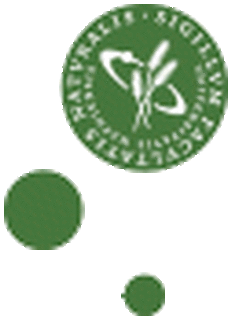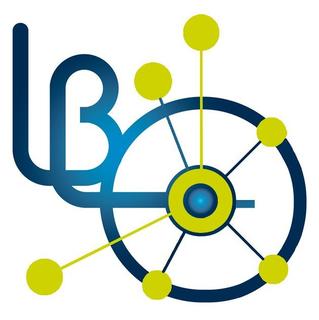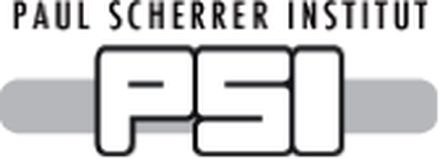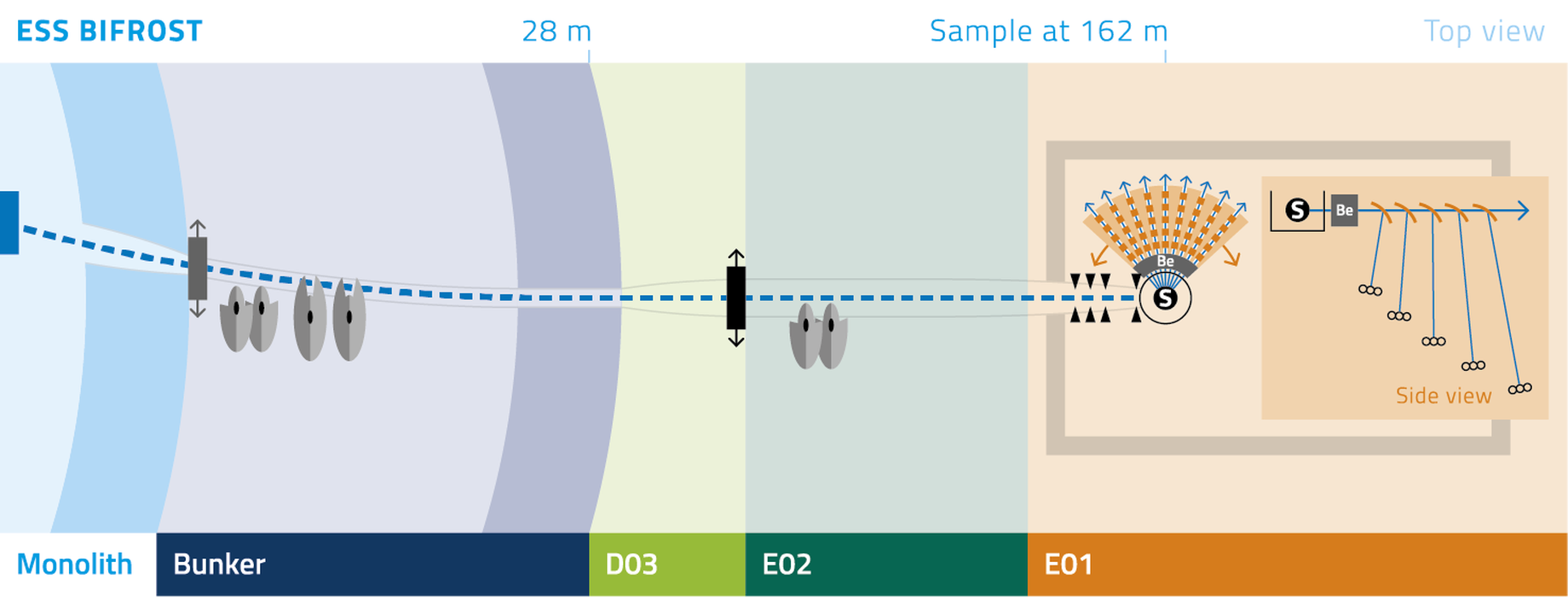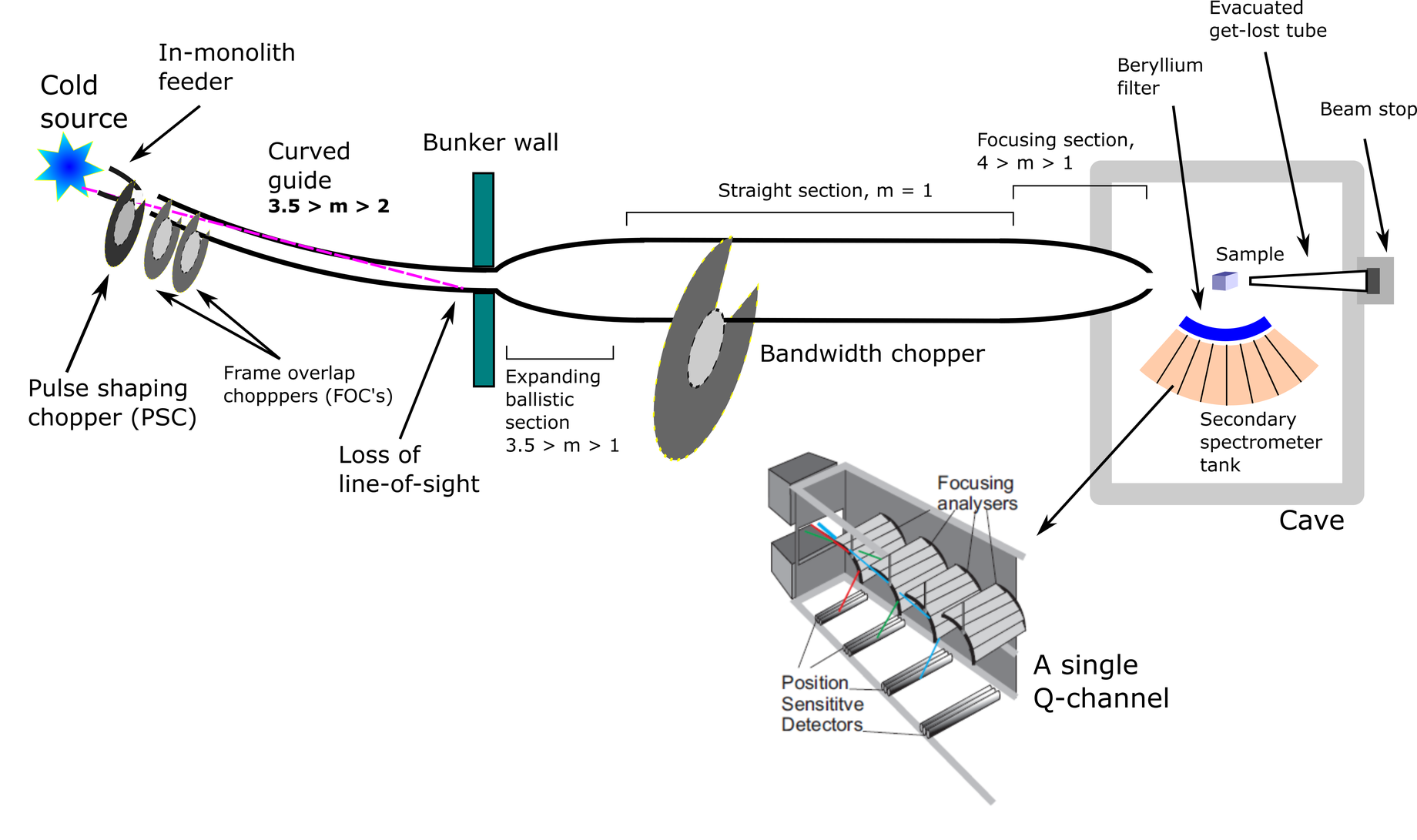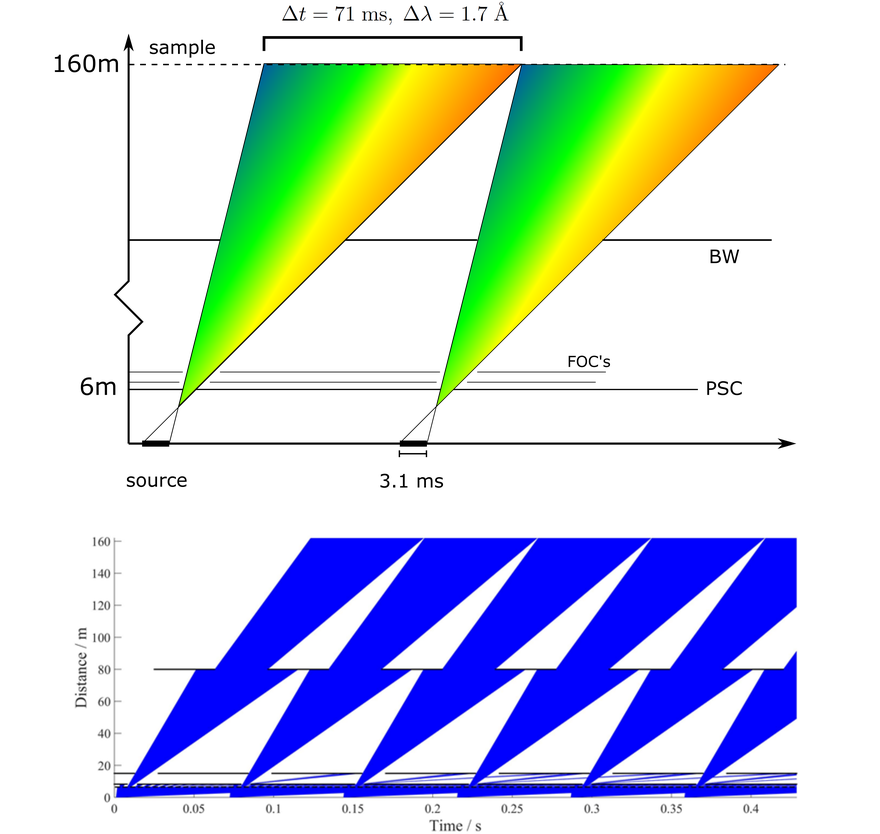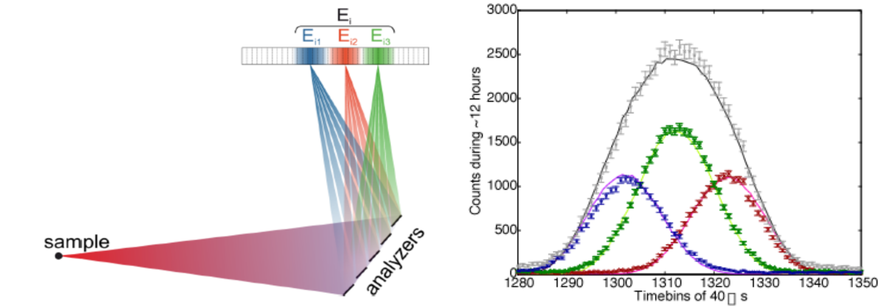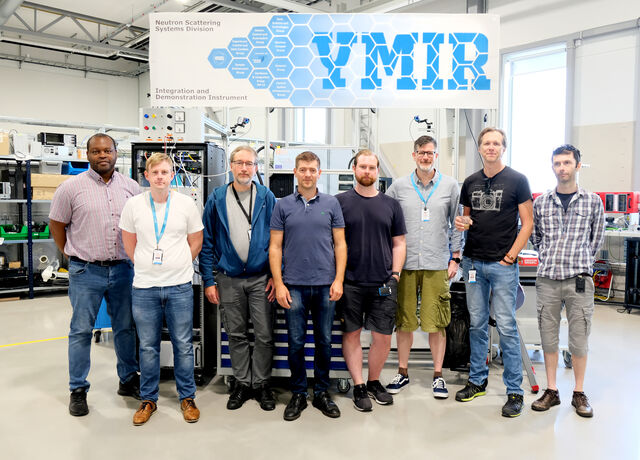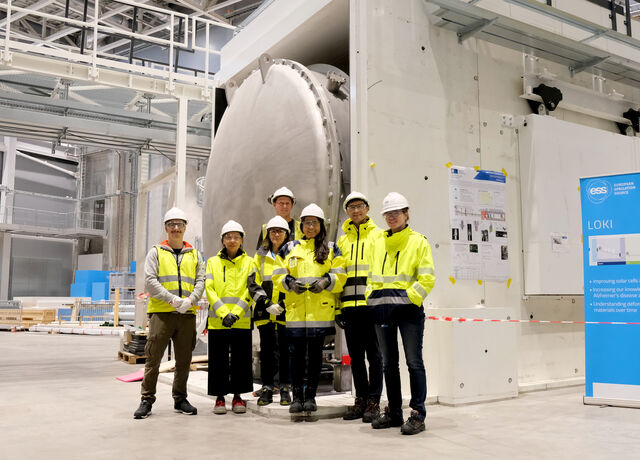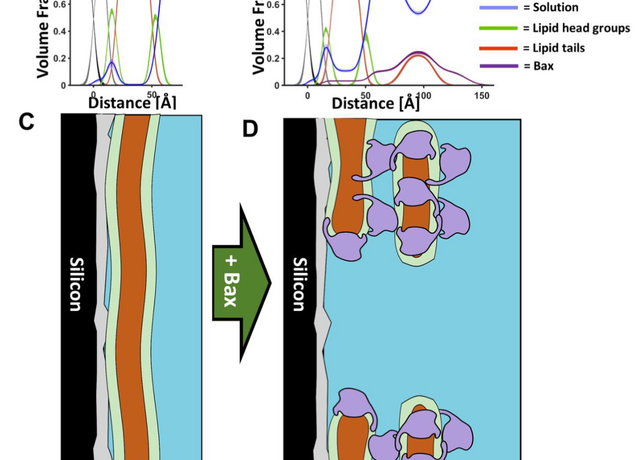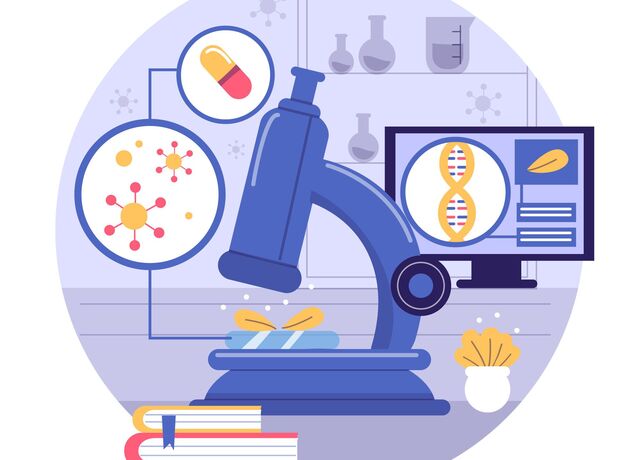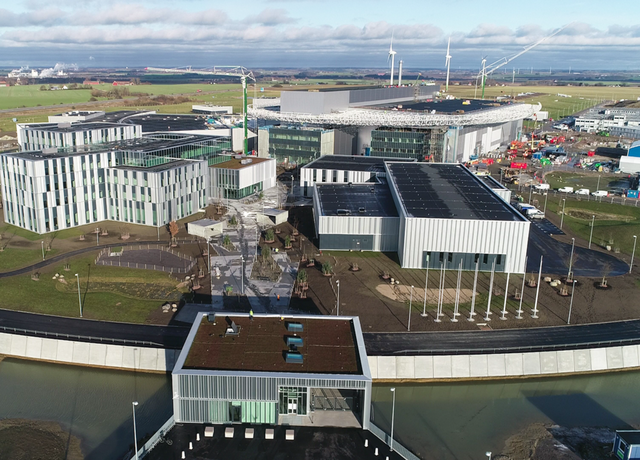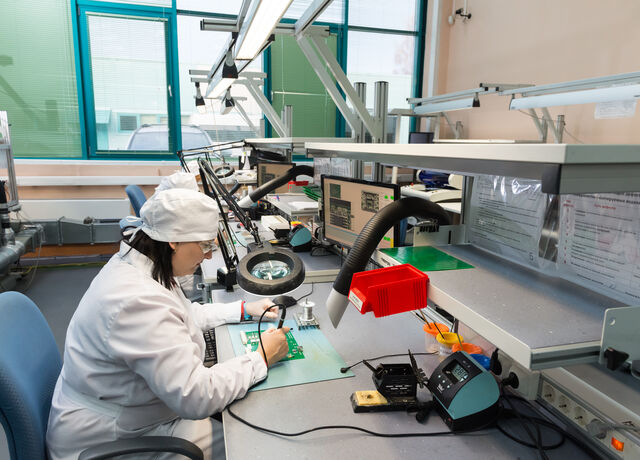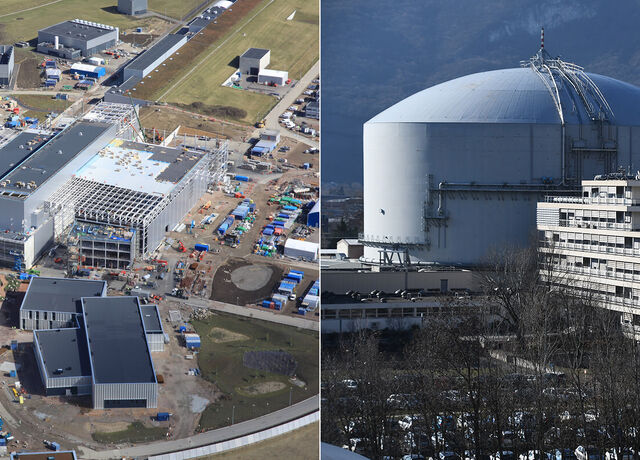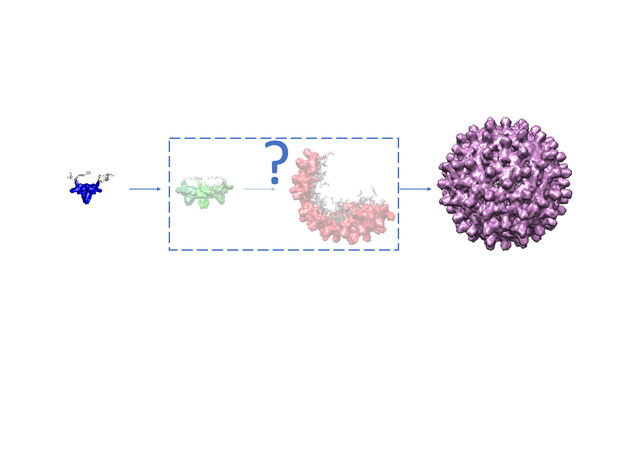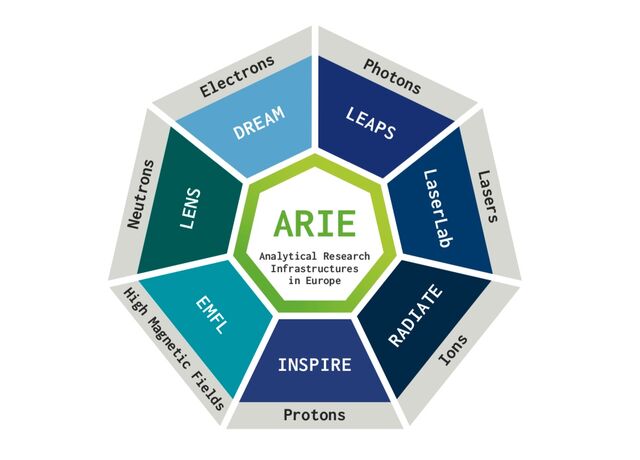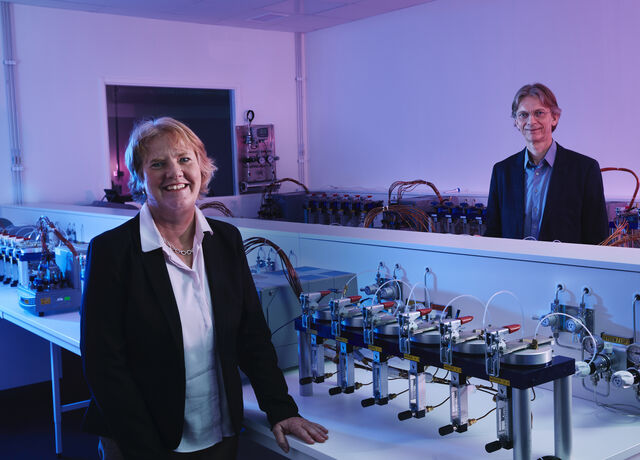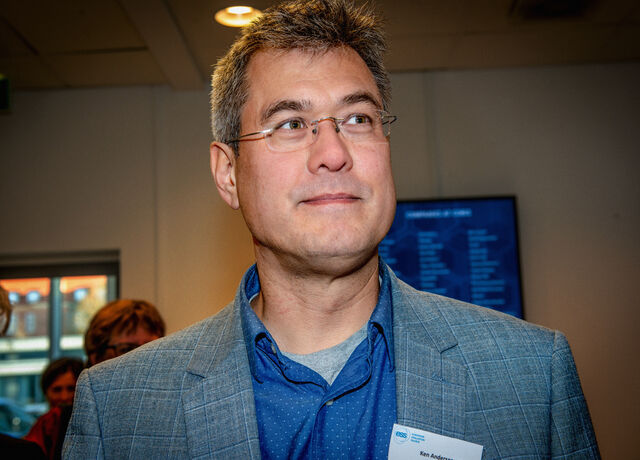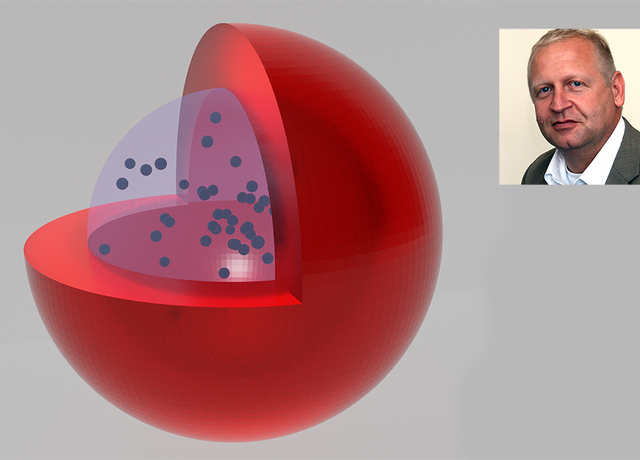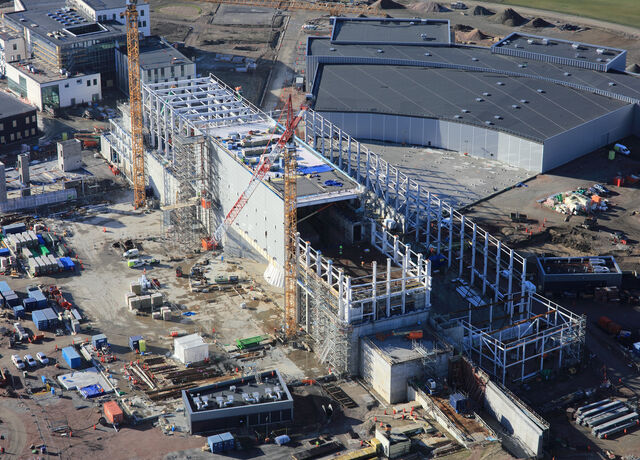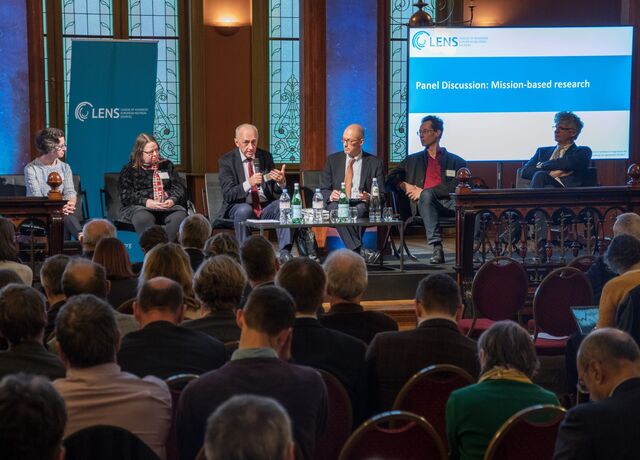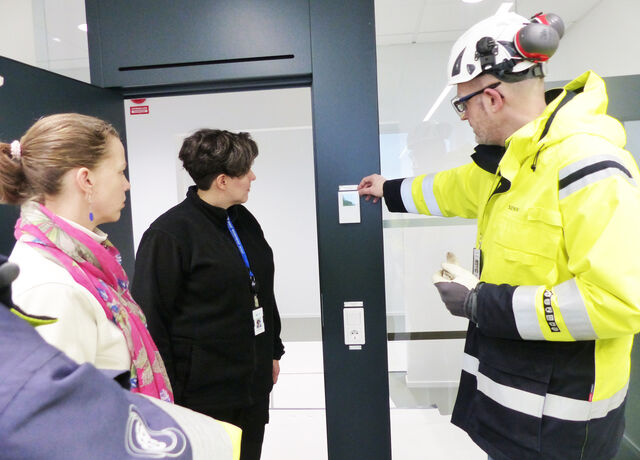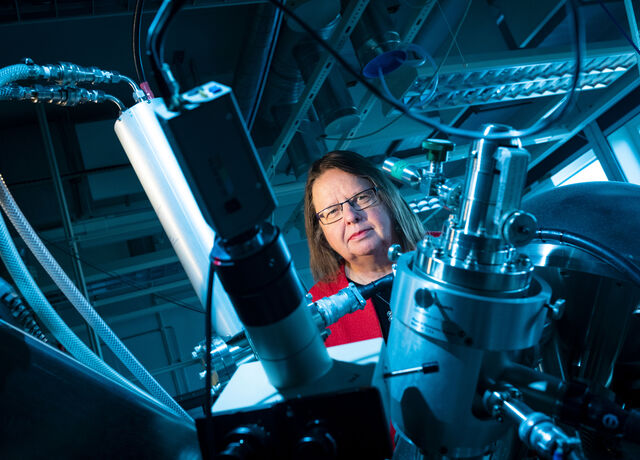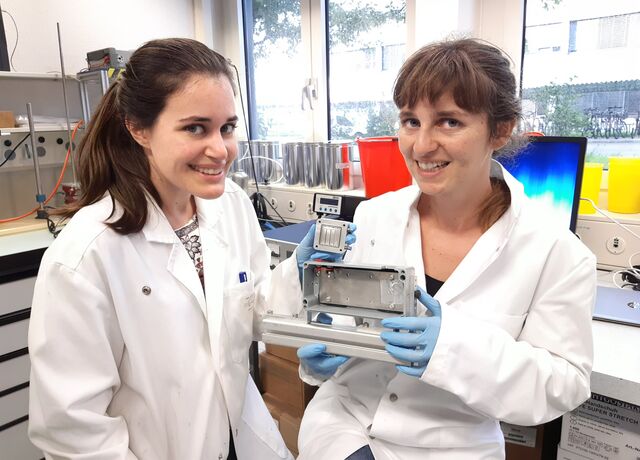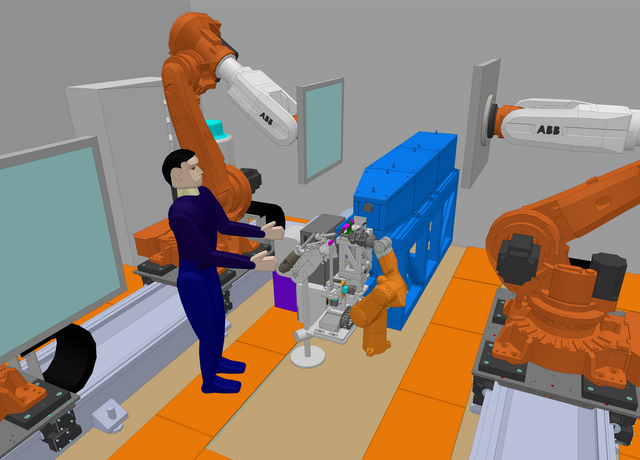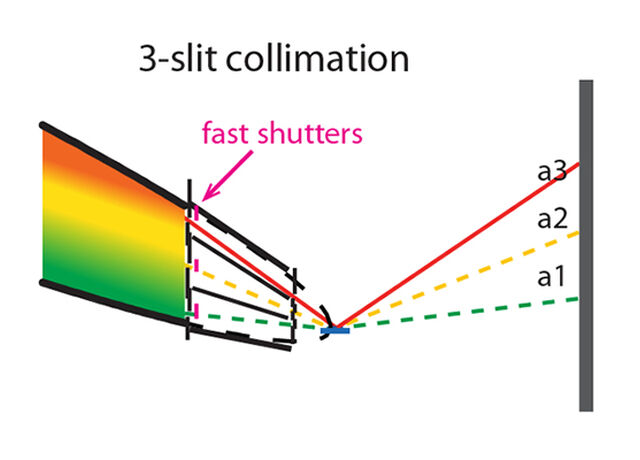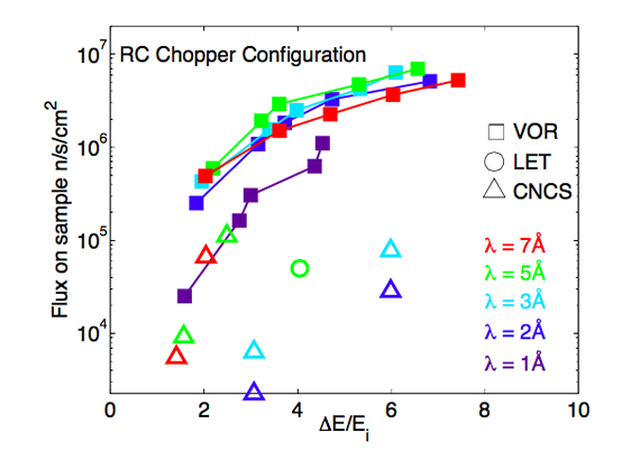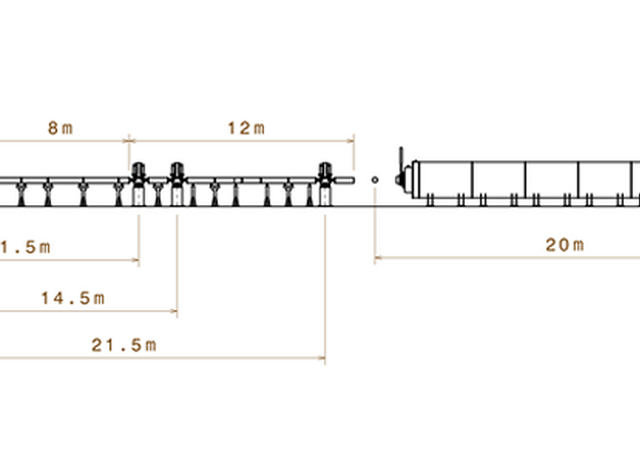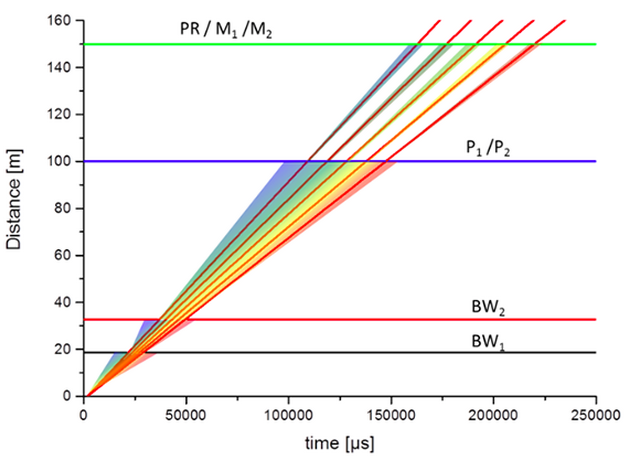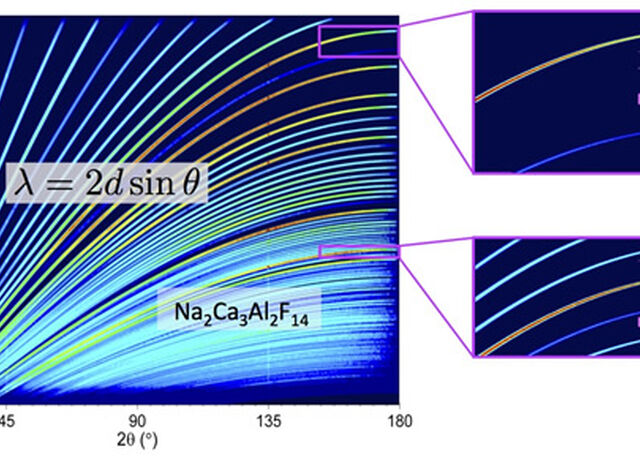BIFROST
Extreme Environment Spectrometer
BIFROST will explore the intricate physics of magnetism and superconductivity, with applications in the IT and energy materials of tomorrow. It will also be used in geoscience and functional materials. It will do this with neutron spectroscopy, the main tool for investigating low-energy dispersive dynamics in single crystals.
Cold neutron spectroscopy is the only tool in existence for probing such dynamics in the 0-40 meV range. Due to the intrinsically low signal-to-noise in neutron spectroscopy, it remains a flux-limited technique, requiring large sample mass for feasibility. However, many species of materials are only grown with techniques that intrinsically yield small crystals in the milligram range, like for instance flux growth techniques or electrocrystallization.
Low temperature dynamics in many of these systems are currently unobservable for this reason alone. In addition, some of the most interesting crystalline systems currently under investigation have inherently weak signals. Neutron spectroscopy today suffers from the partitioned choice between the low flux/large coverage capabilities of ToF spectrometers and the high flux/low coverage capabilities of triple axis spectrometers. These choices are united in the BIFROST spectrometer while increasing flux on the sample by an order of magnitude compared to the best options today.
This allows for BIFROST to function both as a workhorse instrument and as a first feasible option to study low energy dispersive dynamics when small single crystals start to become available of the materials to be discovered in the future—a clear competitive advantage for the ESS. Finally, BIFROST will be an excellent choice for extreme sample environment, as the indirect geometry serves to suppress spurious signals from sample-environment scattering.
Combined with the high flux, BIFROST can open up a plethora of new science cases—especially under high pressure, where sample sizes are invariably small.
Instrument Class
Beam Port
Lead Scientist
Lead Engineer
The science scope of BIFROST contains, but is not limited to, the following cases:
Excitations in unconventional superconductors: Weak spin fluctuations in the high-TC cuprates, nesting vectors in pnictides, excitations in heavy fermion superconductors. Suffering from intrinsic weak cross sections, they will benefit greatly from BIFROST flux.
Excitations in frustrated magnets. Many frustrated magnets have reduced moments and/or intrinsic disorder like spin liquids, resulting in weak signals. Some frustrated magnets cannot form large single crystals using known techniques. BIFROST will greatly impact this important field of magnetism.
Low dimensional magnets/quantum magnets are systems with the main dispersive features residing in a single scattering plane, and which is usually investigated in applied fields and/or pressure. BIFROST is an ideal tool for these problems.
Strongly correlated electron systems exhibiting for instance charge order and spin density waves, often suffer from weak scattering cross sections. Flux is paramount to investigate these materials with neutron spectroscopy.
The study of materials under extreme pressure in geoscience becomes possible at BIFROST. With the high flux, elegant screening of background from sample environment close to the sample and the good elastic resolution, BIFROST can study quasielastic dynamics in the GPa pressure range.
Functional materials will also benefit from BIFROST. Many multiferroic materials of interest have many different phases and the fast aquisition rate of BIFROST makes it ideal for parametric studies.
BIFROST is situated in the long sector using the W4 beam port. An elliptical guide section (the feeder) is inserted into the monolith, to take in the appropriate phase space and tailor it to the so-called Pulse Shaping Chopper (PSC) 6.5 m from the cold source.
The PSC is a face-to-face double-disc chopper, with a maximum angular frequency of 210 Hz – capable of reducing the pulse duration to less than 0.1 ms to improve the energy resolution of the primary spectrometer when needed. Further downstream a narrow curved guide with radius 1500 m, curves out of line-of-sight within the ESS long sector bunker. Two Frame Overlap Choppers (FOC’s) prevent contamination of slow neutrons from adjacent frames.
After the bunker, the beam is expanded into a straight m = 1 guide section with a large cross section. At 80 m, a bandwidth chopper prevents frame overlap at the sample position, where a polychromatic 1.7 Å beam will take up the 71 ms interval between frames and ensure continuous flux on the sample. An evacuated get-lost tube transports the sample to the beam stop while minimizing background.
The secondary spectrometer consists of an evacuated tank, consisting of 9 Q-channels. Each Q-channel contains 6 analyser/detector setups with final energies ranging from 2.7 to 5.0 meV, each equipped with a set of 3 1D detector tubes to employ the prismatic analyser concept. The spectrometer tank can cover a 90 degree scattering angle in two settings, and reach a scattering angle interval of 10-130 degrees. An example of the data format can be seen on figure here.
Sample Environment
BIFROST is designed for extreme sample environment such as magnetic fields above 14 T, temperatures down to 50 mK and pressures above 3 GPa.
Andersen, K. H. et al. The instrument suite of the European Spallation Source. Nuclear Instruments & Methods in Physics Research Section a-Accelerators Spectrometers Detectors and Associated Equipment 957, 39, doi:10.1016/j.nima.2020.163402 (2020).
Prismatic analyser concept: Review of Scientific Instruments, Vol. 85, No. 11, 113908, 01.11.2014
Lead Scientist
Rasmus Toft-Petersen, Technical University of Denmark (DTU)
Lead Engineer
Liam Whitelegg, Technical University of Denmark (DTU)
Engineers
Finn Saxild, Technical University of Denmark (DTU)
Keld Theodor, Copenhagen University (KU)
Sylvain Rodrigues, Laboratoire Leon Brillouin (LLB)
Scientists
Niels Bech Christensen, Technical University of Denmark (DTU)
Kim Lefmann, Copenhagen University (KU)
Jonas Okkels Birk, Copenhagen University (KU)
Rodion Kolevatov, Institute for Energy Technology, Norway (IFE)
Isabel Llamas, Institute for Energy Technology, Norway (IFE)
Bjørn Christian Hauback, Institute for Energy Technology, Norway (IFE)
Philippe Bourges, Laboratoire Leon Brillouin (LLB)
Christof Niedermayer, Paul Scherrer Institute (PSI)
Felix Groitl, Paul Scherrer Institute (PSI)
Main Proposer
Henrik Ronnow (EPFL)
Consultant
Marko Marton (Wigner)




























